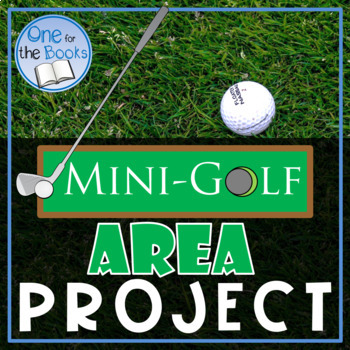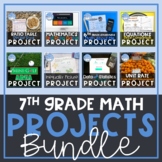Area of Composite Figures | Area of Polygons Project | Digital Math Project
- Zip
What educators are saying
Also included in
- 6th Grade Math Projects BundleThis 6th grade math project bundle currently includes sixteen project based assessments for 6th grade including area of polygons and composite figures, writing/solving/graphing inequalities, data and statistics, classifying rational numbers (2 options), ratios, ratio taPrice $67.00Original Price $86.50Save $19.50
- 6th grade math can be tricky. Students are old enough that they want to be independent, but still young enough that they desire engaging 6th grade math activities, fun projects, and silly lessons, and games. This bundle is not an entire year of content. This bundle does not cover all math standarPrice $187.00Original Price $293.51Save $106.51
- 7th Grade Math Projects BundleThis 7th grade math project bundle currently includes eight project based assessments for 7th grade including area of polygons and composite figures, writing/solving/graphing inequalities, data and statistics, ratio tables, unit rates, operations with decimals, linear ePrice $33.00Original Price $41.50Save $8.50
Description
Area Project - Area of Polygons and Composite Figures Project
Students work collaboratively on this area of composite figures project to create the blueprint of a mini-golf course. Students then find the area of the quadrilaterals, triangles, and composite figures used to create each hole to determine the total turf needed to create the course.
General information: For this project, students work in groups of three to create a blueprint of a nine hole mini-golf course. This assignment allows for creativity while finding the area of multiple polygons including squares, rectangles, parallelograms, trapezoids, triangles and irregular polygons. It is the responsibility of the students to determine and label the information needed to find the area.
Each student in the group is responsible for creating three holes that fit a theme the group has agreed upon. After creating the holes, the students find the area of the holes created by his/her group to ensure everything has been solved correctly by all group members. Although this is a group project, all students should submit their own work page.
Finally, the students ensure all measurements are under the owner’s limit of 800 square feet. Students can create their images on graph paper or in Google slides.
Project Pacing: The project is designed to be introduced and completed in three to four forty five minute periods. However, the project may be introduced during class and completed at home. I recommend students create a rough draft on graph paper of all holes prior to making the final copy.
Set-up/Materials: Set-up is very minimal; provide students with the directions, graph paper, rulers and materials for designing the course.
Prefer Digital? We have you covered. This resource has a digital option as well.
Go above and beyond:To engage students even more, consider talking to a local mini-golf owner about providing passes for a free round of mini-golf for any students that get 100% on the project or have students vote on the “best” design and execution to earn the reward. Really motivate students by allowing the best design to make one of their holes to be showcased at the mini-golf course. Use the letter provided to present to your local business owner about the exciting project opportunity.
Topics covered by this project:
✔️ Area of square
✔️ Area of rectangle
✔️ Area of parallelogram
✔️ Area of trapezoid
✔️ Area of triangle
✔️ Area of irregular polygons (composite figures and irregular shapes)
Included in this resource:
- Information for the Teacher (instructions/directions/ideas)
- Student Directions
- Project Rubric
- Three sample designs to spark student ideas
- Answer key for sample designs
- Organized printable for student work
- Sample letter to local mini-golf business owner
- Editable Google Slide Digital Option
If you like this project, you may be interested in these projects as well.
Data and Statistics Create a Game Project
Area of Polygons and Irregular Polygons Project
Math Surrounds Me – 6th Grade End of the Year Project
Math about Me 6th Grade Standards
Math about Me 5th Grade Standards






